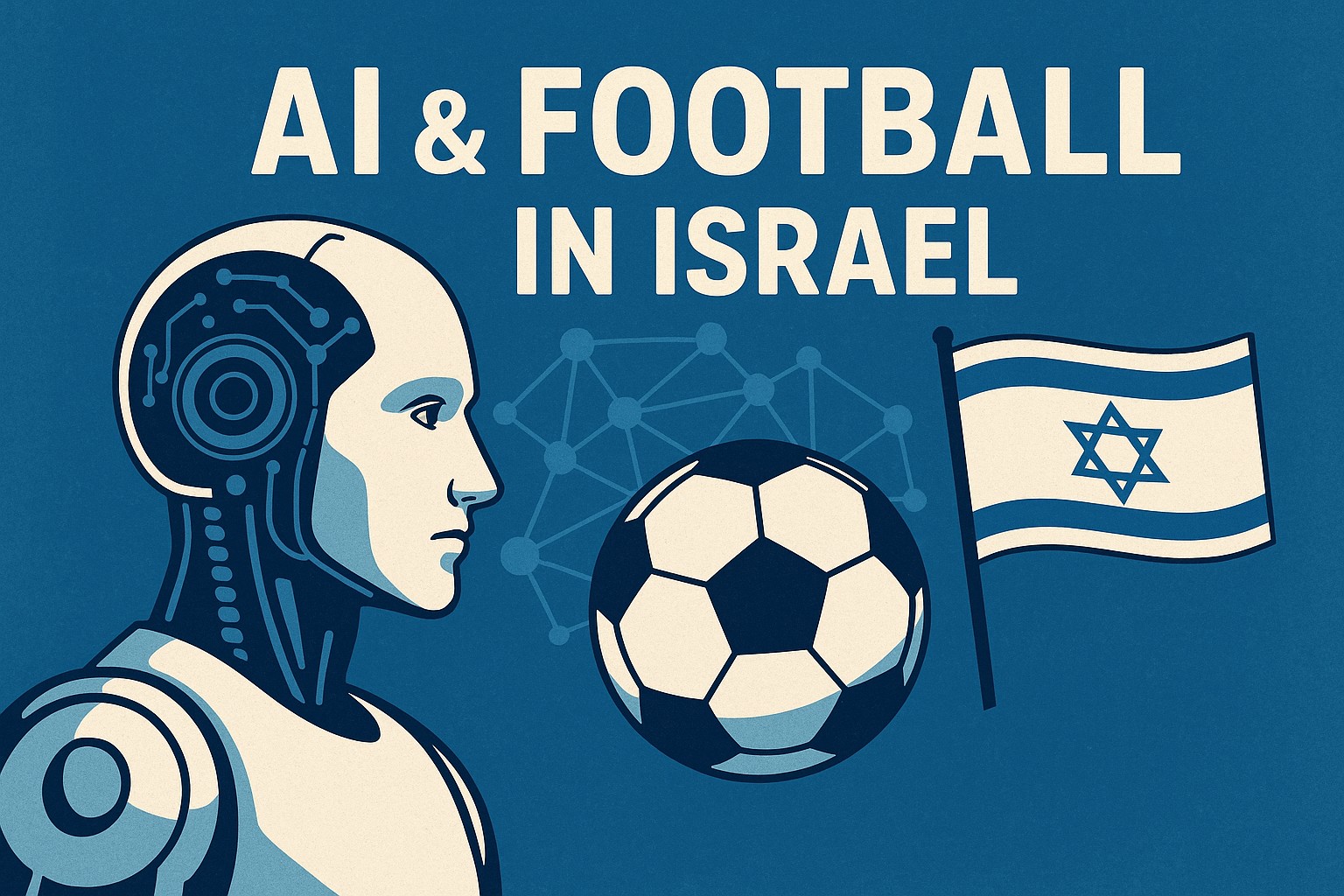AI & FOOTBALL IN ISRAEL

Generally
Artificial intelligence (AI) is now embedded in sport and especially across football — from computer-vision performance tools and injury-risk models to hyper-personalised fan apps.
Israeli innovators are at the forefront of this shift, supplying advanced analytics, body-worn sensors that track movement and physiology in real time, and engagement platforms adopted by clubs and leagues worldwide.
More broadly, “sports tech” means tools that enhance performance, coaching, broadcasting, and fan experience. It blends AI, data analytics, biomechanics, and digital media. In practice, that includes automated video production, smart wearables, personalised training and nutrition, cognitive-training tools, and immersive fan applications. As these systems move from trials to everyday use, technology is no longer an add-on: it is reshaping how football is trained, played, commercialised, and watched.
Performance Analytics
AI systems now process vast streams of data from matches and biometric sensors. They spot subtle patterns in movement and decision-making, highlight strengths and gaps that are easy to miss in real time, and suggest individualised development plans.
A key example is the injury-risk model: a statistical/ML (Machine Learning) system that combines workload, biomechanical, medical inputs, and contextual data to estimate the probability of injury over a set period. Paired with coach and medical judgment, it helps to balance training and recovery, keep players available, and make smarter selection calls during busy schedules.
High-resolution cameras and wearables now capture fine details of how players move and recover. This allows clubs to quantify workload, monitor fatigue, and flag periods of elevated injury risk. Computer vision can break down every movement on the field, offering insights that were previously impossible to capture and turning hours of footage into a concise, evidence-based story on which coaches and players can act.
Recruitment, scouting, and tactics
Recruitment and scouting have shifted from gut feel alone to evidence-assisted decisions. Predictive models scan large match datasets to benchmark player prospects and forecast development paths — often attaching an evidence-based view of value to potential signings.
Tactically, real-time pattern recognition helps coaches refine shape, identify pressing moments, and design set pieces with forensic precision, both in preparation and during matches. The aim is not to replace a coach’s intuition; it is to make that intuition sharper by adding clear facts about a player’s strengths and weaknesses, and how well they might fit or succeed in different leagues and playing styles.
Fans and media
AI is also rewriting the fan experience. Real-time statistics, predictive insights, and personalised content now reach supporters on the devices that they already use, narrowing the distance between the stadium and the living room. Commercially, clubs can tailor personalised content to fans, adjust ticketing and merchandising prices dynamically, anticipate churn, and activate sponsors with far greater accuracy.
Automated production and instant highlights make it affordable to film and distribute more games than ever before.
Integrity, security, and smarter venues
Integrity and security are evolving in parallel. Systems detect anomalies in betting or match patterns, manage access across stadium zones, track locations where appropriate, and analyse incidents after they occur.
The same real-time detection, tracking, and anomaly-identification techniques, that matured in other mission-critical domains, are being adapted for safer venues and more resilient competitions.
Legal basis
For readers operating across borders, a brief legal compass helps.
The EU AI Act (Regulation (EU) 2024/1689) is now in force and will phase in between 2025 and 2027. This Act categorises AI applications into four risk levels: unacceptable risk, for example, social scoring; high-risk; limited risk; and minimal risk. It bans certain uses, for example, emotion inference in the workplace or education, and imposes governance, testing, documentation, and monitoring duties on high-risk AI systems—relevant where analytics materially influence employment-type decisions, such as selection, renewals, or bonuses.
Alongside this sits the Data Protection Law (GDPR): if player or fan data from the EU is processed, clubs and vendors must define controller/processor roles, sign data-processing agreements (Art. 28 GDPR), give clear notices, secure biometric/health data, and use an approved transfer tool, for example, Standard Contractual Clauses, if data is accessed outside the EEA, unless the destination has an EU adequacy decision – Israel currently does. The EEA means all EU countries plus Iceland, Liechtenstein, and Norway (not Switzerland); the UK is outside the EEA and has its own “UK GDPR.”
In Switzerland, the revised Federal Act on Data Protection (FADP) has applied since 1 September 2023, bringing GDPR-style transparency, minimisation, and security expectations to performance analytics and fan platforms.
In Israel, the Privacy Protection Law – Amendment 13, effective 14 August 2025, strengthens enforcement and accountability around sensitive data, including biometrics—directly relevant to AI-enabled wearables and profiling.
Tournament frameworks, for example, the FIFA Legal Handbook and UEFA Privacy Notices, provide additional, competition-specific guardrails.
For further information and legal advice on AI and Football in Israel, email Kim Gamboni at gamboni@valloni.ch.